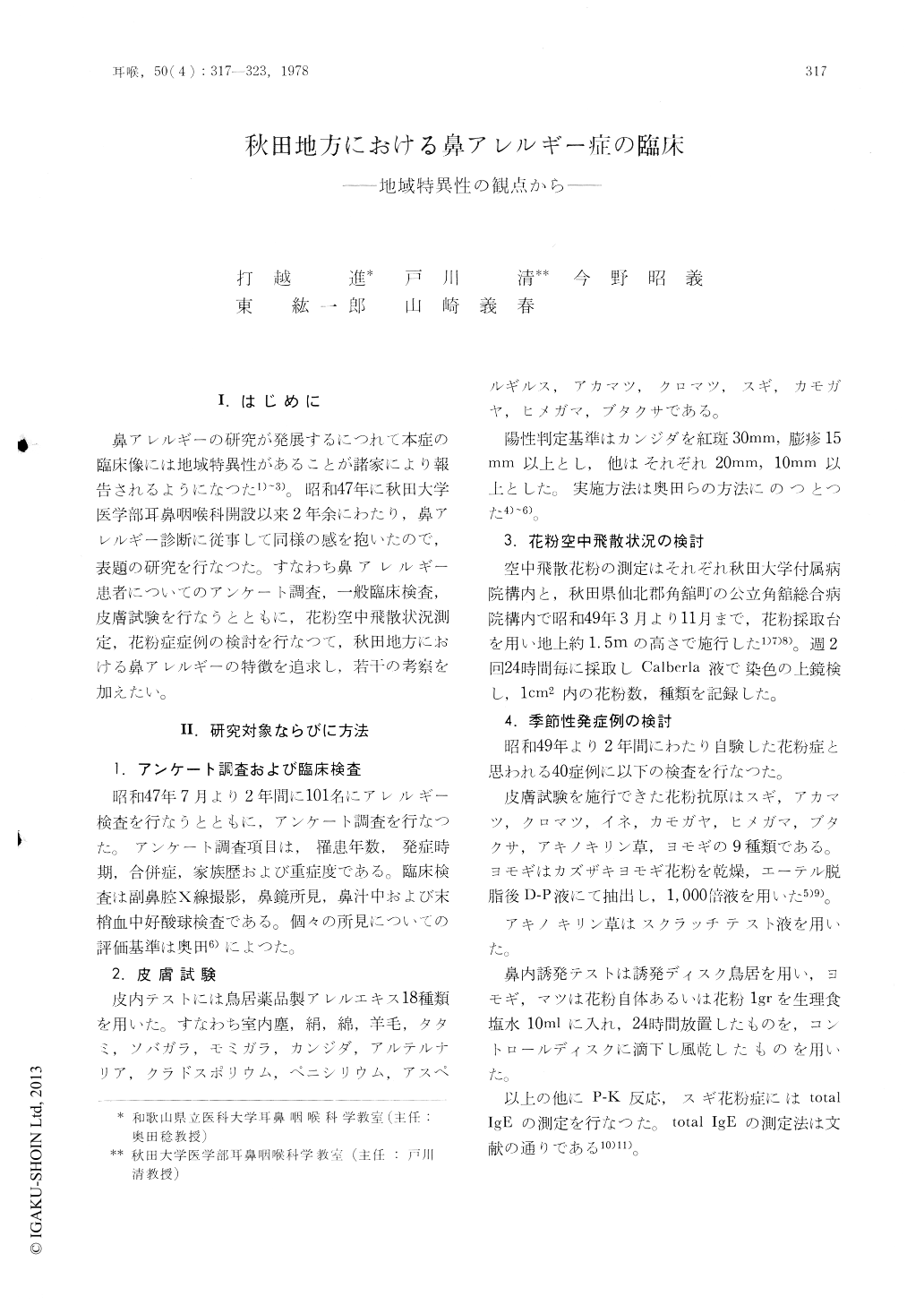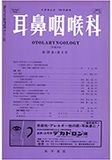Japanese
English
- 有料閲覧
- Abstract 文献概要
- 1ページ目 Look Inside
I.はじめに
鼻アレルギーの研究が発展するにつれて本症の臨床像には地域特異性があることが諸家により報告されるようになつた1)〜3)。昭和47年に秋田大学医学部耳鼻咽喉科開設以来2年余にわたり,鼻アレルギー診断に従事して同様の感を抱いたので,表題の研究を行なつた。すなわち鼻アレルギー患者についてのアンケート調査,一般臨床検査,皮膚試験を行なうとともに,花粉空中飛散状況測定,花粉症症例の検討を行なつて,秋田地方における鼻アレルギーの特徴を追求し,若干の考察を加えたい。
In clinical features of nasal allergy evidences of regional difference appear to be outstanding. A study was made on this subject on 101cases at the Otolaryngological Clinic of the Akita University Medical School through means of skin reactions, nasal provocation test, eosinophilia count in the peripheral blood, the amount of nasal secretion and other diathetic investigations.
There were 43 cases with seasonal aggravation possibly caused by pollinosis; 44 perennial and 14 uncertain as to their cause. Twenty six cases were found to be suffering with atopic diathesis, and other 44 cases appeared affected with one or more complications of allergic diseases.
The study was further made on air-borne pollen grains which were obtained from Cryptomeria japonica, Pinaceae, Betulaceae, Fragaceae Gramineae and Artemisia.
Pollens derived from various sources are recognized for trees as in March to June, grass-season from May to November and weed-season from September to November.
Among these pollens that appeared to be the most important ones causing pollinosis was Japanese cedar for trees, orchard grass in the grass season and the wormwood appeared to be dominant in the weed season.

Copyright © 1978, Igaku-Shoin Ltd. All rights reserved.


